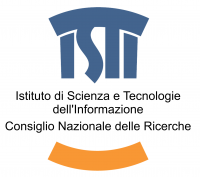Keynotes
The Opening Address of CAA 2015
Computer Graphics Techniques for Analysis
Towards a new landscape archaeology?
The Use of 3D Models for Intra-Site Investigation in Archaeology
ArcheoFOSS: free/open source software and archaeological research, ten years later
pyArchInit- python for archaeology – Part II
Archaeological science as community enterprise
Building domain-agnostic databases using design patterns
#epicfail? Has Open Source in archaeology failed?
Electronic resources for archaeology: from databases to digital open data
SITAR: starting point, challenges and future development of an archaeology data sharing platform
GQBWiki goes open
From past to present: Reconciling years of Arctic archaeological data into a single visual database
Archaeological contents: from open access to open data
Radiocarbon dates, cremations, flatgraves and the appearance of the urnfield cemeteries in Belgium
The Italian Manifesto for Open Data in Archaeology (MODA)
Legacy Data – Open strategies for closed data
Use of cartographical Open Data in the context of the project SITAN
The Past and Future of Open Access in Archaeology
From Lamp-light to Laser-light: Opening access to the historic and contemporary imaging of monuments
Exploring sustainable publication and the web: a case -study from the Villa Magna Project
Digital resources for archaeology. The contribution of the on-line projects by ISMA-CNR.
Modelling large-scale human dispersals: data, pattern and process
Using GIS and Geophysics to Examine Caesar’s Campaign against the Helvetii in 58 BC
High-performance agent-based models of worldwide human dispersals
Modelling glacial archaeological potential in the Pennine Alps – A multidisciplinary approach
Individual-based modeling of population growth and dispersal in discrete time
What can we learn about the environmental preferences of Neanderthals and Modern Humans?
Testing the Variability Selection Hypothesis on Hominin Dispersals
Adoption of innovations and expansive phenomena in the 2nd millennium BC in Europe.
Large scale population modelling in the deep past. Issues and concerns.
Identification of Agent-Based Modeling elements in “Out of Africa” hypothese
An Agent-based Model to Simulate the Balkan Neolithic Expansion
Linked Data: From interoperable to interoperating
The Syrian Heritage Project in the IT infrastructure of the German Archaeological Institute
Using CIDOC CRM for dynamically querying ArSol, a relational database, from the semantic web.
How to move from Relational to Linked Open Data 5 Star – a numismatic example
The Labeling System: A bottom-up approach for enriched vocabularies in the humanities
From interoperable to interoperating Geosemantic resources
Roundtable
Simulating the Past: Complex Systems Simulation in Archaeology


